“Democracy is the theory that the common people know what they want, and deserve to get it good and hard.” —H. L. Mencken
Social scientists have joined all other Americans, and non-Americans, in seeking to explain what happened on November 8 and to predict what comes next. Three points in this already extensive and compelling set of writings stand out:
- Few social scientists were more prescient than the majority of other observers; I along with most of my colleagues thought Donald Trump’s victory to be very unlikely.
- Our explanations and prognostications diverge from one another, and usually bear a strong resemblance to whatever framework each scholar has been deploying for a long time. Like most people influenced by motivated reasoning, we tend to fit our new knowledge into the contours of what we thought we already knew.
- The divergence in scholars’ views is huge, with regard to both why voters supported Trump and what comes next. Whether social scientists are able to rethink cherished theories as a result of the November 8 surprise is a concern for us academics – but which explanations and predictions, if any, turn out to be most accurate is of concern to the nation and even the world.
I will set aside the analyses of “what happened?” in order to focus on the more immediately pressing issue of “what happens next?” Scholars are notoriously poor at prediction; a wise economist taught me early in my career to “never give a number and a date at the same time.” Nonetheless, and despite the fact that the election showed us to be weak prognosticators, prediction at such a dramatic, tense, and unexpected moment is too strong a temptation for many social scientists to resist.
I see a range from “not much will change” to “everything will change,” based largely on analyses that emerge from earlier scholarship. Perhaps never before has there been so much at stake in determining who has the best grasp of American political dynamics.
Not much will change: In a purported public letter to president-elect Trump, Elaine Kamarck pointed to “presidents before you that came to office swearing to ‘drain the swamp.’ And they failed. So what is it about the federal government that makes it so hard to change?” Her answer is “the rule of law. Every penny spent on an ‘incompetent bureaucrat’ or a stupid program is spent according to a law that has been passed and that you would need to undo.” Kamarck points to civil service protection for federal employees, entitlements and interest payments that absorb almost two-thirds of the federal budget, legal prohibitions against agencies’ shifting funds from their original purposes, courts’ rejection of executive orders opposed by Congress, and other brakes on dramatic, or even substantial, change from politics as usual in Washington.
Corey Brettschneider looks vertically rather than horizontally for brakes on the Trump presidency. He points out that “the federal government relies on cooperation by the states in enforcing federal policy. If states and localities exercise their right to not cooperate with unconstitutional policies, this will very much impede the capacity of the federal government.” Some – the state of California, the cities of New York and Providence, have already “taken up the mantle of local resistance to unconstitutional federal action,” and more will follow. Ironically to those who associate “states’ rights” with segregation and racist violence, “states’ rights federalism. . . is the key to protecting our liberties.”
George Edwards looks outside of government rather than inside to support his prediction that Trump will make little headway with “revolutioniz[ing] public policy.” A president needs strong public support to prevail in the long and arduous process of passing and implementing laws. But Trump did not receive a mandate from the voters, the public rejects many of his policy stances (to the degree that they can be discerned), and it will be very difficult to “reach out to the center and add those who might be sympathetic to Trump’s policies to his coalition.” There is no center. So President Trump will have less support than he anticipates, and presidents “who fail to. . . assess accurately the potential for obtaining public support. . . are prone to overreach and political disaster.”
Starting from a very different framework, Jack Balkin arrives at roughly the same conclusion. Using Steven Skowroneck’s logic of the cycles of political time, he proposes that Trump will be a “disjunctive president.” Disjunctive presidents have the task of trying to hold together an aging coalition or party whose components are increasingly opposed to one another, incapable of dealing with new problems, irrelevant to constituents, or out of tune with demographic changes. The Republican regime that started with Ronald Reagan is now almost exhausted; Trump’s mission in the era of disjunction is to “take unorthodox positions designed to repair increasingly serious breaches within the party.” Unfortunately for his supporters, however, “this mission is close to impossible. . . . If Trump turns out to be a disjunctive president, we should not expect that he will last more than one term in office. He may face serious internal challenges within his own party. . . . His party will probably lose to the opposition party (most likely the Democrats) in the 2020 presidential election.”
Politics will get nasty: Balkin’s blog post, however, includes a caveat: “If Trump becomes a dictator, you can throw away the whole analysis; all bets are off. . . . We have no previous examples of out-and-out demagogues gaining the White House in American history. Therefore we can’t be certain of their fate. . . .” The combination of three other social science analyses provides conceptual tools for probing this radical uncertainty. Albert Hirschman and Michael Rothschild’s “tunnel effect” is the first step:
Suppose that I drive through a two-lane tunnel, both lanes going in the same direction, and run into a serious traffic jam. . . . I am in the left lane and feel dejected. After a while the cars in the right lane begin to move. Naturally, my spirits lift considerably, for I know that the jam has been broken and that my lane’s turn to move will surely come any moment now. . . . But suppose that the expectation is disappointed and only the right lane keeps moving: in that case I, along with my left lane co- sufferers, shall suspect foul play, and many of us will at some point become quite furious and ready to correct manifest injustice by taking direct action.
Less metaphorically, as an economy changes, “the upwardly mobile become integrated, whereas the nonmobile lose their earlier hope of joining the upward surge and turn into enemies of the existing order. . . . [They] become furious”.[1]
Adding Timur Kuran’s model of “preference falsification” is the second step in understanding Balkin’s radical uncertainty. Preference falsification is “the act of misrepresenting one’s genuine wants under perceived social pressure.” Authoritarian states repress free speech directly. But liberal democracies can, through social pressures (that is, “political correctness”), generate almost as severe a repression.[2] People afraid to speak their mind out of worry about social opprobrium are the cultural residents of the left lane of Hirschman’s tunnel, just before they “become furious.”
Elizabeth Noelle-Neuman’s “spiral of silence” adds the final element: people who feel constrained from expressing unpopular opinions are unaware of how many others share their semi-secret views. The fear of social isolation keeps each individual silent about dissenting views—until it doesn’t.[3] A moment of social disruption, or the appearance of a new leader such as Trump, suddenly gives social permission to break the silence, releasing the jammed-up left laners. Thus, “Trump’s success gives racists new heart by suggesting that many more people share their beliefs than they might hitherto have believed. Also, it tells them that if they themselves publicly express their racism, they are less likely to be socially punished than they previously believed.” The left lane surges forward.
Two questions emerge at that point. What are the effects of the coarsening of public discourse that results from realizing that others also had been caught in the spiral of silence, and therefore abandoning preference falsification? On the one hand, perhaps Trump supporters now merely say in public what they had been whispering in private. In that case, public engagement becomes ugly but it remains “mere” talk. On the other hand, however, perhaps this linguistic liberation damages its targets, encourages intolerant behavior, and promotes repressive policies. That implies the second question: How far does the released fury of the drivers in the tunnel’s left lane take them, and the rest of the United States, into outright racist, xenophobic, sexist, disability-mocking, and religiously repressive policies? We do not yet know, and once again analyses differ dramatically. The New York Times, a liberal newspaper in the American sense, reports that “finding hate crimes on the rise, leaders condemn vicious acts.” But the Economist, a liberal newspaper in the European sense, assures its readers that “the apparent rise in hate-crime since the election is likely to be short-lived,” with yet another caveat: “If the past is any guide, that is.”
Armageddon: A few social scientists predict even more dire consequences of the 2016 election. One possibility is constitutional amendments gutting crucial rights and statuses or making the American constitutional structure even less democratic than it now is. The Republican Party will control both legislative houses in 33 states as of January 2017, and will control the governorship as well in 25 states. (Democrats control the legislature and governorship in five states.) Republicans will soon have majorities in 69 of the 99 state legislative houses. Two-thirds of the state legislatures—that is, 34—can call for a constitutional convention; we are not far from that possibility. Will Congress be required to balance its budget each year? Is birthright citizenship in jeopardy? Will abortion be banned, or separation of church and state, or civilian control of the military? Will voting rights for particular segments of the population be curtailed? Will the president be granted full power over foreign policy? In the most dire scenario of constitutional unzipping, even a comparison of the 2016 American election to the 1933 German election may be insufficiently pessimistic: “Given what’s happened in the United States, who’s going to save the world this time?”
A few social scientists are in fact pondering the likelihood of a slide into authoritarianism. Although she is careful not to label Trump a fascist, Julia Lynch points to “important parallels” between Trump and Benito Mussolini. Both received support from the far right and from conservative religious organizations or individuals. “Trump’s plans for the economy, like the Italian fascists’, seem to blend economic nationalism with giveaways for well-positioned big-business owners.” Given Republican control of all three branches of the federal government, “the U.S. political configuration generates possibilities for consolidation of power in a loosely accountable executive that are similar to the period surrounding Mussolini’s rise.”
In the guise of a review of Hannah Arendt’s Origins of Totalitarianism, Jeffrey Isaac also notes similarities between the 1930s and the present: “we, too, live in dark times, even if they are different and perhaps less dark.” Origins offers pertinent lessons, perhaps most importantly a discussion of the almost accidental “crystallization” of many specific evils—“anti-Semitism, imperialism, racism, . . . crises of multinational empires, the displacement of peoples by war and by technological change”—into “a maelstrom of evil and horror foreseen by no one, perhaps not even the protagonists themselves. . . . A society suffused with resentment, according to Arendt, is ripe for manipulation by the propaganda of sensationalist demagogues.”
Daniel Ziblatt and Steven Levitsky concur that “democracy’s fate may hang in the balance.” The United States “has already entered uncharted territory. Unlike any other major party candidate in modern US history, Trump has openly and repeatedly attacked basic norms of our democracy.” Levitsky and Ziblatt apply Juan Linz’s “litmus test” for a would-be authoritarian leader: “These warning signs include a refusal to unambiguously disavow violence, a readiness to curtail rivals’ civil liberties, and the denial of the legitimacy of an elected government.” Not only did Trump ace this test during his campaign, but also Republican leaders are passing another Linzian test: “what undermines democracies in crisis is not only the behavior of extremists but also that of mainstream politicians who—out of fear, ignorance, or political calculation—tolerate and even facilitate their ascent.” Probably American norms, institutions, and practices are strong enough to provide a “soft guardrail” to preserve liberal democracy. But not certainly: “democracies get into trouble when that mutual acceptance [by major political parties] disappears. When we view our partisan rivals as disloyal, as un-American, as a threat to our security, as a threat to our way of life, then we can begin to justify extraordinary measures against them. And that is the road to authoritarian politics.”
Where do we go from here?
Scholars are weighing in on other topics. These include the spread of right populism and ethnic nationalism across the western world, the possibility of moving into a post-fact political era, the prospect of a nightmarish post-modernist media environment in which words mean whatever the speaker wants them to mean, the long-term impact on employment of new technologies from surveillance to robots—and the possibility that Trump’s administration will break through the repeated failures and sclerosis of Washington elites, ushering in an era of economic invigoration, international stability, and broader social inclusion. If they provide nothing else, the 2016 election and the forthcoming Trump presidency may create full employment for social scientists.
Although I have no direct research base for either of these points, I can envision two plausible futures beyond those already discussed. They arguably contradict one another, so I offer them only as possibilities.
On the one hand, assuming that ideology and policy positions still have stable meanings, western political actors may have reached the limits of organizing political opinions and policy options mainly through a left-right dimension. That dimension was intersected at earlier points in American history by orthogonal dimensions of racial liberalism or conservatism [4][5]or of social or cultural liberalism or conservatism.[6] [7] Over the past few decades, partisan polarization mostly subsumed those alternative dimensions—but a new cross-cutting cleavage of cosmopolitanism versus localism may now be emerging. By “cosmopolitanism,” I mean a rough confluence of support for free trade of goods and ideas, relatively open borders for people, tolerance or enthusiasm for boundary-crossing by race, gender, or religion, and other forms of support for mixing, impurity, boundary-blurring, or openness.[8] There are both left and right versions of cosmopolitanism; cultural studies scholars, Silicon Valley entrepreneurs, and Wall Street bankers agree on more than they realize. Conversely, by “localism,” I mean a rough confluence of support for economic protectionism, vigorous nationalism or pride in local rootedness, resistance to immigration, preference for cultural homogeneity, clear gender roles and identities, and other forms of support for purity or boundedness. Again, there are left and right versions of localism; Bernie Sanders agrees with Trump on trade policy, and both black and white nationalists reject multiracial imprecision.[9]
A local-cosmopolitan dimension cutting across a left-right dimension permits us to locate otherwise confusing political alliances in a 2 x 2 grid. Sanders and Trump share localism but disagree on economic redistribution. Sanders and Clinton share views on redistribution, but disagree (until Clinton shifted her position to appeal to Sanders’ supporters) on economic localism. Republicans dismayed at Trump’s localist protectionism share his rejection of redistribution. Clinton had allies on Wall Street, at least with regard to immigration and trade policy. Judging by his Cabinet appointees, Trump’s presidency is likely to further expand the localist/right-wing quadrant of this 2×2 grid.
On the other hand, perhaps we can no longer assume, analytically or substantively, that ideology and policy positions still have stable, interpersonally shared, meanings. Without sliding all the way into a complete post-modern or post-fact quagmire, one can see this election and possibly the forthcoming presidency as signaling the limits of rationalist social science (see Danielle Allen’s comments). Political scientists’ decades of research on policy disputes, ideological constraint, spatial modeling, and deliberative democracy seem increasingly irrelevant. Many of the reasons that voters supported Trump, the extraordinary emotionalism of his massive rallies, and Trump’s brilliant success in campaigning on who he is (or who he is not) rather than what he will do, all remind me of an astute political scientist’s comment from many years ago: “politics is religion, not economics.” That is, for almost half of the voters, this election was about resentment and hatred, tribal loyalties, fear and anxiety, desire for a strong leader; the more Clinton proposed policies and referred voters to her fact-checking website, the more ground she lost. Politics has never, of course, been primarily a deliberative process[10] [11] – but most political actors at least paid obeisance to the idea that it was supposed to be.[12] No longer, at least for now. Whether liberal democratic norms, practices, and institutions can prevail remains to be seen.
[1] Hirschman, Albert and Michael Rothschild (1973). “The Changing Tolerance for Income Inequality in the Course of Economic Development.” Quarterly Journal of Economics 87 (4): 544-566.
[2] Kuran, Timor (1998). Private Truths, Public Lies: The Social Consequences of Preference Falsification. Cambridge MA, Harvard University Press.
[3] Noelle-Neumann, Elisabeth (1984). The Spiral of Silence: Public Opinion – Our Social Skin, 2nd Ed. Chicago IL, University of Chicago Press.
[4] Katznelson, Ira (2013). Fear Itself: The New Deal and the Origins of Our Time. New York, Liveright Publishing Co.
[5] McCarty, Nolan, et al. (1997). Income Redistribution and the Realignment Ofamerican Politics. Washington D.C., AEI Press.
[6] Brady, Henry (2001). “Trust the People: Political Party Coalitions and the 2000 Election.” The Unfinished Election of 2000. Rakove, Jack, Ed. New York, Basic Books: 39-73.
[7] Phelan, Jo, et al. (1995). “Education, Social Liberalism, and Economic Conservatism: Attitudes toward Homeless People.” American Sociological Review 60 (1): 126-140.
[8] Hochschild, Jennifer (2005). “Looking Ahead: Racial Trends in the U.S.” Daedalus winter: 70-81.
[9] Hochschild, Jennifer, et al. (2012). Creating a New Racial Order: How Immigration, Multiracialism, Genomics, and the Young Can Remake Race in America. Princeton NJ, Princeton University Press. Chapter 3.
[10] Achen, Christopher and Larry Bartels (2016). Democracy for Realists: Why Elections Do Not Produce Responsive Government Princeton NJ, Princeton University Press.
[11] Walzer, Michael (1999). “Deliberation and What Else?” Deliberative Politics: Essays on Democracy and Disagreement. Macedo, Stephen, Ed. New York, Oxford University Press: 58-69.
[12] Hochschild, Jennifer and Katherine Levine Einstein (2015). Do Facts Matter? Information and Misinformation in American Politics Norman OK, University of Oklahoma Press.
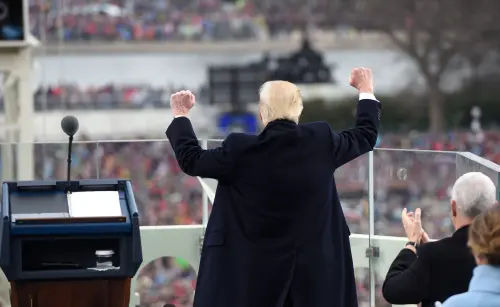
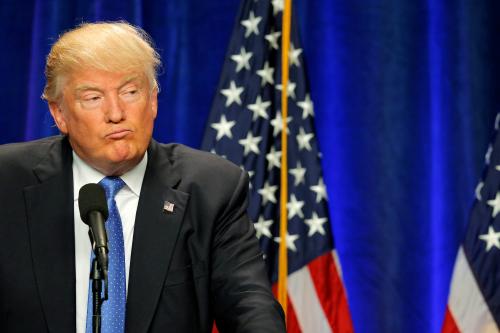
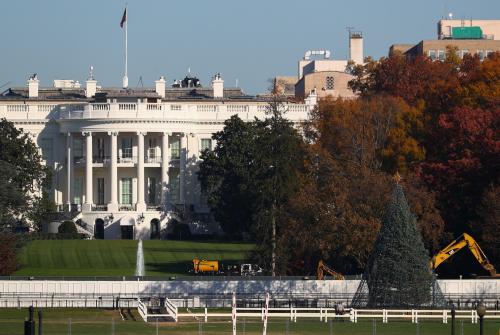
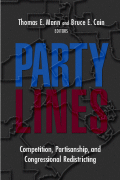
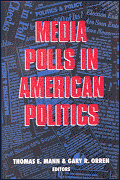
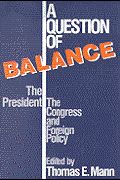
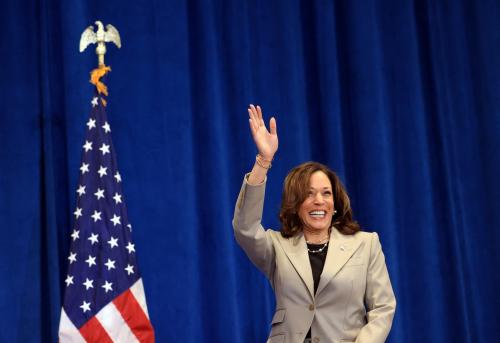
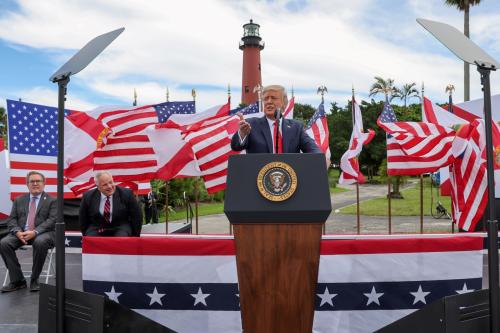

Commentary
What happens next? A tour of social scientists’ predictions for the Trump presidency
January 6, 2017